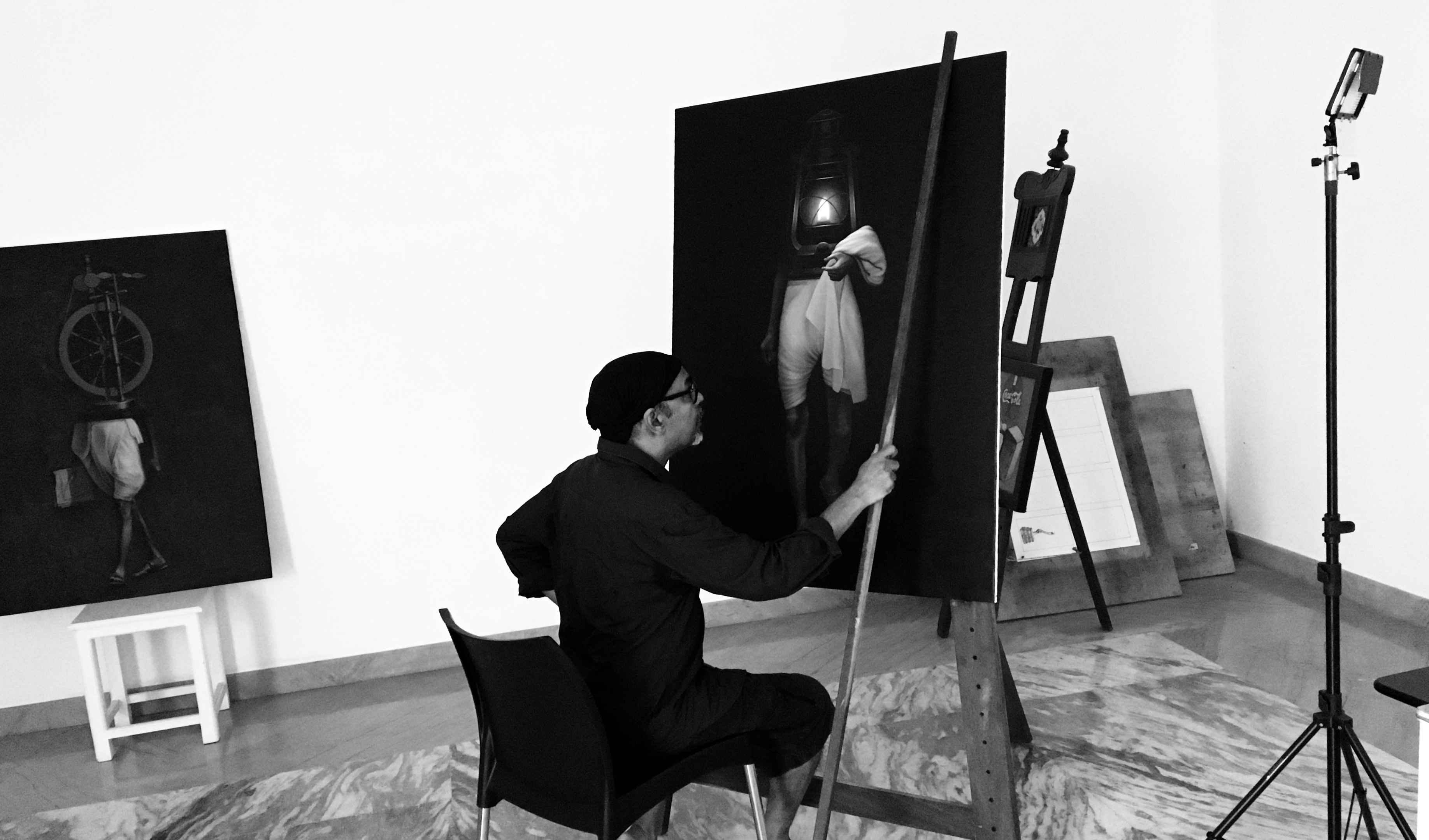“I see death in chocolates”—Gandhi, 1911

‘I was not familiar, from whatever I knew from my Architecture School, with the structural technology or the materials in use in the buildings that I was to examine. What I had to handle were walls made with mud and large cracks for openings. What I had to encounter were objects such as laterite stone that I had not even heard about. Around me are people who belive that even bovine dung is an appropriate material for building’—It was thus that Laurie Baker, who was born in England and graduated in Architecture, and came to India after having fallen into the magnetic circle of Mahatma Gandhi, intially observed the houses here.
Even though he has not described it in writing, it must have been more or less like this that Laurie Baker must have seen Gandhi too at first. Gandhi must have been wearing clothes in khadi thread that he himself spun on his much—used charkha.
Laurie Baker, who came to Kerala from Northern India, did not move anywhere else after that. Laterite stone, red bricks, and clay tiles became his favourite materials. He even said that he was inspired by the houses made of bamboo in Kerala. It was Gandhi’s ideas that Baker followed. What made the most profound impression on him were Gandhi’s words that the ideal house is the one made using materials from within a five-mile radius. Made from such words, even before these words were uttered, was a house made in Chempazhanti, a house that still stands—the house of Sree Narayana Guru. It must have been the encounter with a few of the hundreds of such houses in India that stunned Baker. The astonishment of the encounter between Western urbanity with the Eastern lamp.
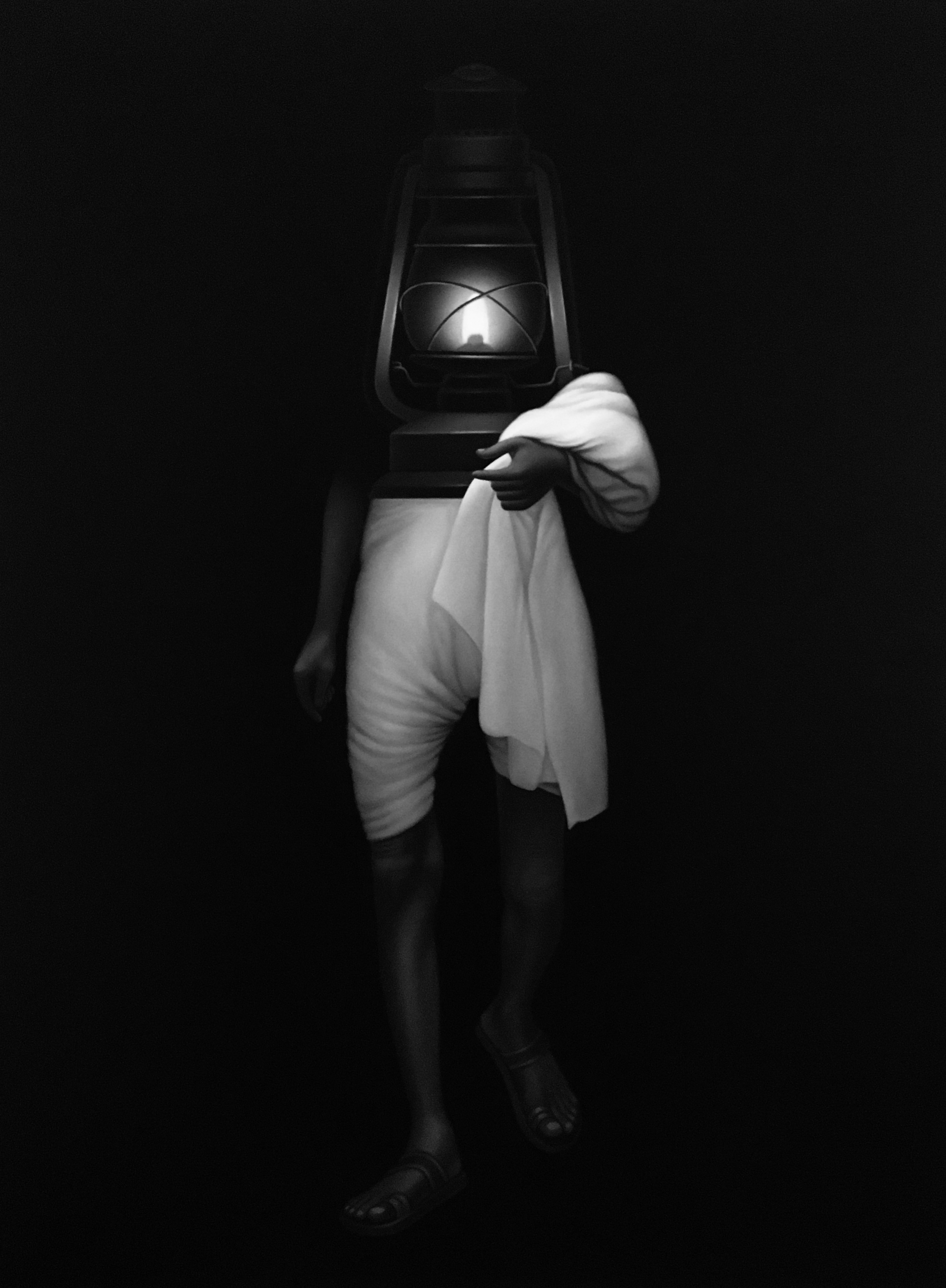
Even though Gandhi stayed there for just a year, there is a residence in Johannesburg known as Gandhi’s house or Satyagraha House, designed by Gandhi’s friend, the German architect Hermann Kallenbach. When you look at it, it feels like it is made of two or three large bird-nests stacked together. The Satyagraha House also reminds one of writer-philosopher Kumaran Asan’s studio in Thonnakkal in its external resemblance.
House, ashram, a place to live—it looks like a hut built by an indigenous person with inherent notions about these. The English and the Afrikaner call it kraal—a barn. In the house made with European technology, it was with the architect that Gandhi resided.
While joining the struggle of indigo workers in Champaran, Gandhi is engaged in profound thinking about the “house”. There is no scarcity of grass or bamboo in Champaran. It is with these that the school in Bhitiharwa was built. Sommeone set fire to it one night. It was felt that it was not prudent to build with bamboo and grass. That school was under Sadasiva Lakshman Soman and Mrs. Gandhi. Advocate Soman decided to make a solid permanent building for the school. With his contagiously enthusiastic hard work, a lot of people co-operated with him and promptly, a brick building was erected in its place. There was no need to fear that this too will be reduced to ashes. Thus, Gandhi was engaged in an intimate experiment with suitable materials for building from early on in his political struggles.
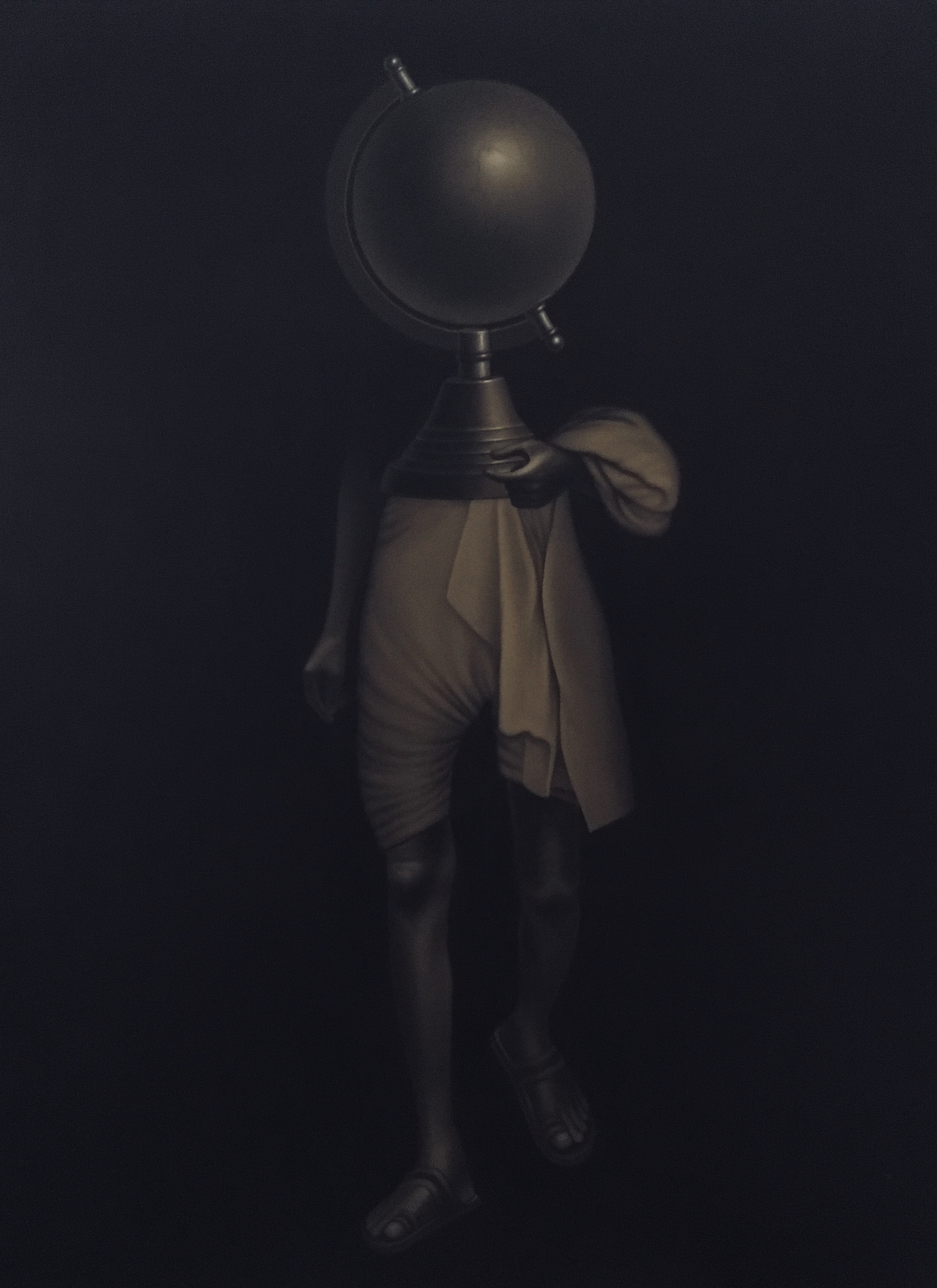
It is close to Ahmedabad that Gandhi first establishes the idea of the house as ashram (Kocharab Ashram) in India—in the bungalow of his friend and lawyer Jivanlal Desai. Gandhi abandons the Kocharab Ashram due to the breakout of plague the same year. Gandhi’s thoughts are engrossed by the idea of the house again and again. Home, Home Rule (swaraj), Freedom. The house, the tools and utensils for use by the self inside the house, the objects outside the house.
There ought to be several trees and cattle. There ought to be cultivable land. There must be all activities of the village around the house. ‘India’, the village that no one rules, must enter one’s house at least just as much as a drop of water contains the entire ocean.
Gandhi’s new house on the banks of the Sabarmati river was built using materials sourced from within a five-mile radius. The roof was made with clay tiles commonly used to build ordinary homes in Gujarat. In umber and sienna, this small residence is radiant with all the simplicity of villages in interior India. It was in the house that Gandhi the architect built, Hriday Kunj, that he and Kasturba lived until just before the Salt Satyagraha. It was to that house that freedom fighters came and went. It is from here too, from the Sabarmati ashram standing in thirty six acres, that Gandhi leaves for Dandi to make salt. In Attenborough’s film Gandhi, he has filmed a scene where Gandhi leaves Nehru and other leaders seated in Hriday Kunj, to go and apply mud pad to a goat. Sabarmati Ashram had room for all inheritors of the earth. An emancipated zone of self-rule in thirty six acres.
Attenborough must have used sets to depict the scenes in Hriday Kunj. That must have been one of the least expensive sets to build in the history of Hollywood. Gandhi is a minimal artist as well. A great artist who, by going into the condensed essence of things, abbreviates the expansive.
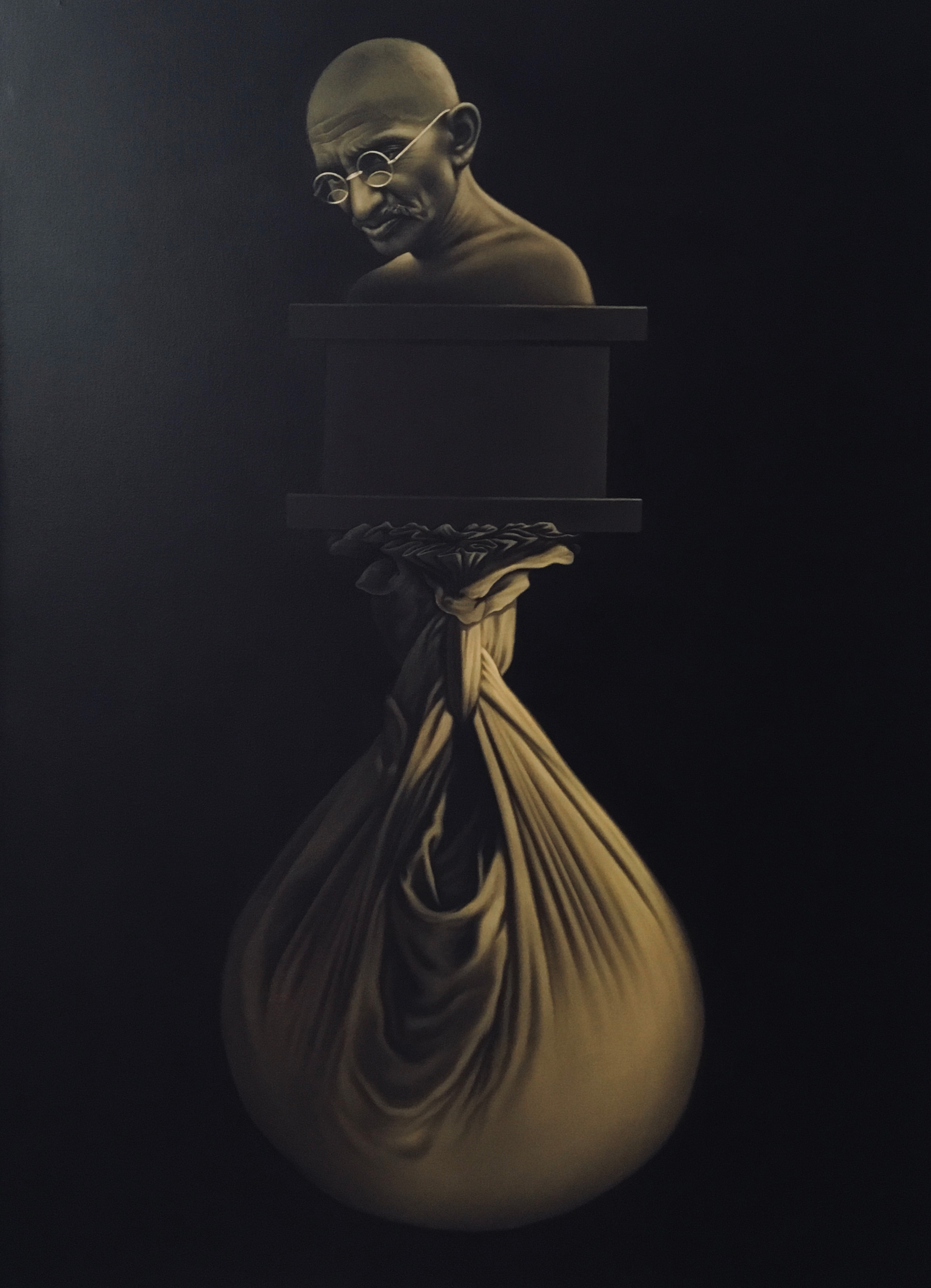
Growing towards non-being: such is the nature of Gandhi’s objects. The universe of Gandhi’s objects that evolve into symbols and ideas remind us of the Buddha’s yellow-soaked pleated garment, his oval-shaped wooden tablet, and the fan with a single leaf. This soft malleable clay left behind by Gandhi and the Buddha continues to exist in this world. And is a process akin to how clay turns into wings of freedom in an enlightened sculptor’s hands. Objects make appearances disguised and clothed as ideas. It is an alchemical knowledge that Gandhi acquired through continuous meditation on the persons and objects around him. If you look closely at a tree for long, you will never feel like cutting it. If you meditate upon the axe for days, the sharp edge will keep getting more and more blunt. It is the same alchemy that turns salt into an experiment of resistance in Gandhi’s fingers.
There is a story about Rilke. For a while the poet was secretray to the French sculptor Auguste Rodin. The poet was in deep distress having been unable to write anything for a long time. The time when he was searching, hand upon his left breast, whether the source of his muse had dried up. Rilke presented to Rodin the state of distress his life was in. The sculptor was aware of the many times and many circumstances that have afflicted him like the slowly spreading venom of a snake bite.
He said to Rilke: there is a zoo closeby here. And in a cage, an ever-alert leopard. Go, stand in front of the animal, and observe it for long.
See if you can make something of it. Do not abandon hope. Be resilient. Suppose, on the other hand, nothing happens, understand that you are no poet at all.
As is mentioned in Rodin’s note, Rilke went and stood in front of the fierce animal. After several days, the leopard broke the cage and appeared as a poem at the tip of Rilke’s pen.
What this story teaches us is to observe, to look long at objects and people and animals. The insight gained by such long meditation is what we call art and poetry. Life and politics too, are the same. This is what the Buddha had to say as well. The secret to death and life is locked inside even the most miniscule grain. Become small, shrink the body, then discarding all garments and ornaments keep looking long upon objects. Thus may your life be enlightened.

I, Margaret Bourke-White… used to be staff photographer in the renowned news magazine, Life. In 1945, I was the first to record the agonizing visuals from Nazi concentration camps. The one, who, with a single click, familiarised the world with Gandhi and his charkha (spinning wheel).
When I went to see Gandhi in his ashram situated amidst a colony of those called Untouchables in Pune, I did not know that I had to go through several of his secretaries before I could gain permission. Finally when I met the chief secretary, immersed in white khadi clothes, I asked the bespecacled man for permission to photograph Gandhi.
“Do you know how to spin thread?”, the secretary asked in return, in Gandhi’s voice.
“I have not come to spin the wheel with Gandhi; I have come to photograph him”, I replied. “If you have no practical knowledge of how to spin thread, how will you understand the inner truth of the charkha?” I felt that the one standing in front of me was the very Gandhi whom I would come to know later.
“Look, I am busy, The negative film has to get to the airport in the evening itself for the photograph to be printed in Life magazine”. I tried to cajole the adamant new Gandhi who did not yield.
“Are you insisting that I stop taking photgraphs and start spinning?” I tried the last arrow in my quiver.
“Yes, that is indeed what I desire”, the secretary said, “in order to know Gandhi, you must learn spinning”.
“How long will it take to learn spinning?”
“That depends on your talent and intelligence”—the secretary’s replies flew thick and fast.
That very evening, it is only after learning how to spin thread on the charkha that Margaret Bourke-White obtained permission to photograph the rare beauty of Gandhi. Even in that now—famous photograph, Gandhi is seated on the floor, leafing through news clippings.
In the foreground sits the charkha on which Margaret Bourke-White learnt how to spin.
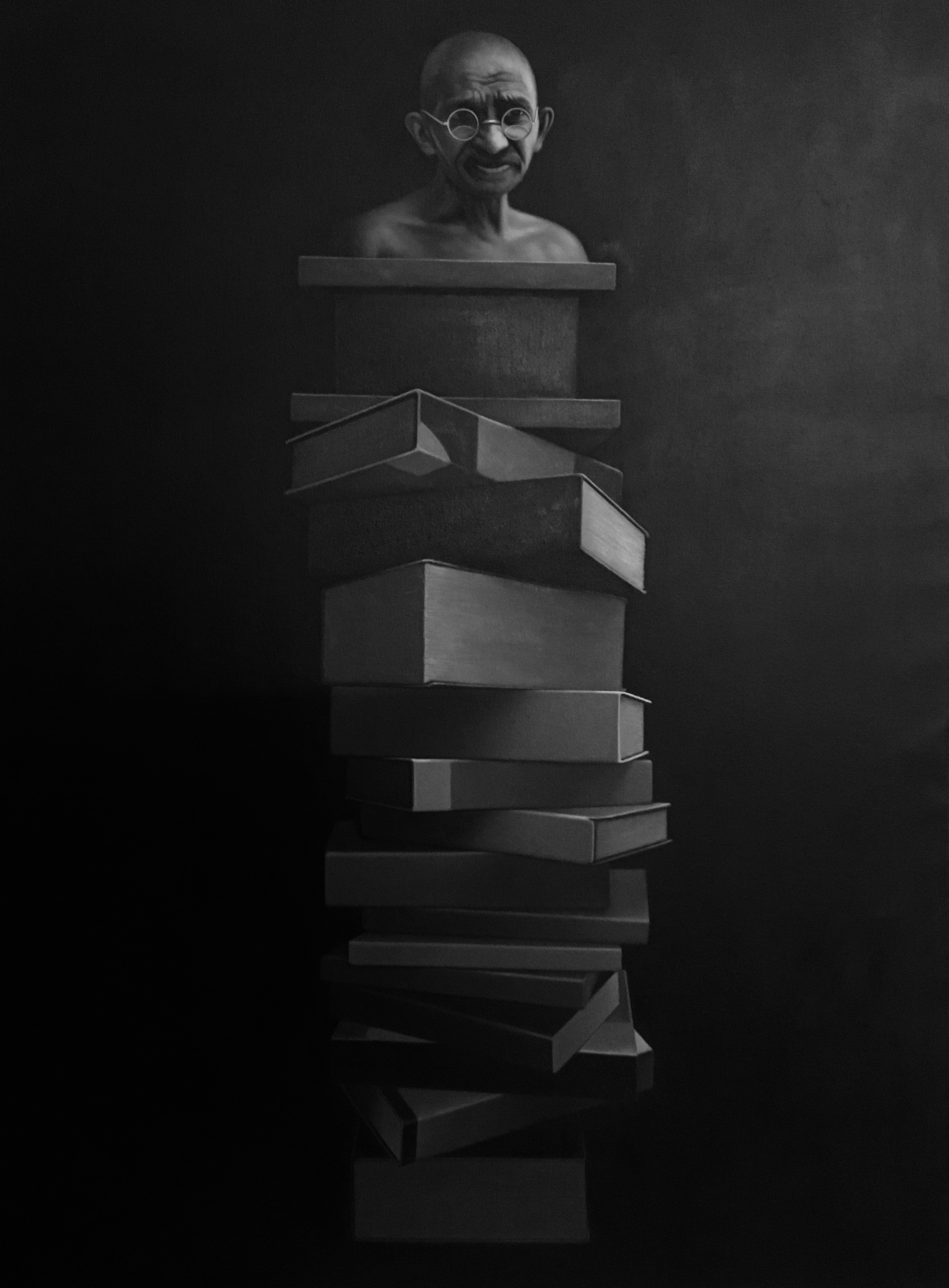
When we enter Hriday Kunj in the Sabarmati Ashram, we can see sizeable objects becoming smaller in Gandhi’s hands. Gandhi makes objects smaller by editing them. Mattresses covered by sheets white as goat’s milk. Gandhi reduced the height of his bed by several inches. It is perhaps that he wanted the human body to be as close to the earth as possible, that finally beds had no legs at all. The writing table closeby and the bed are not much different in their heights. Like a nimble-fingered designer’s art, Gandhi’s objects acquired immense beauty by becoming shorter and smaller.
It is in 1918 that architect and designer Geritt Rietveld designs his well-renowned chair. In colours blue, yellow and red, it stands proud as a modern throne. When one sees it at the Museum of Modern Art in New York where it is housed today, one wonders if it is possible to sit on this modern design. A four-line poem on the chair one does not want to sit on, that begins, “When I sit, I do not want/to sit like my seat-flesh likes” is inscribed on the back of Rietveld’s chair.
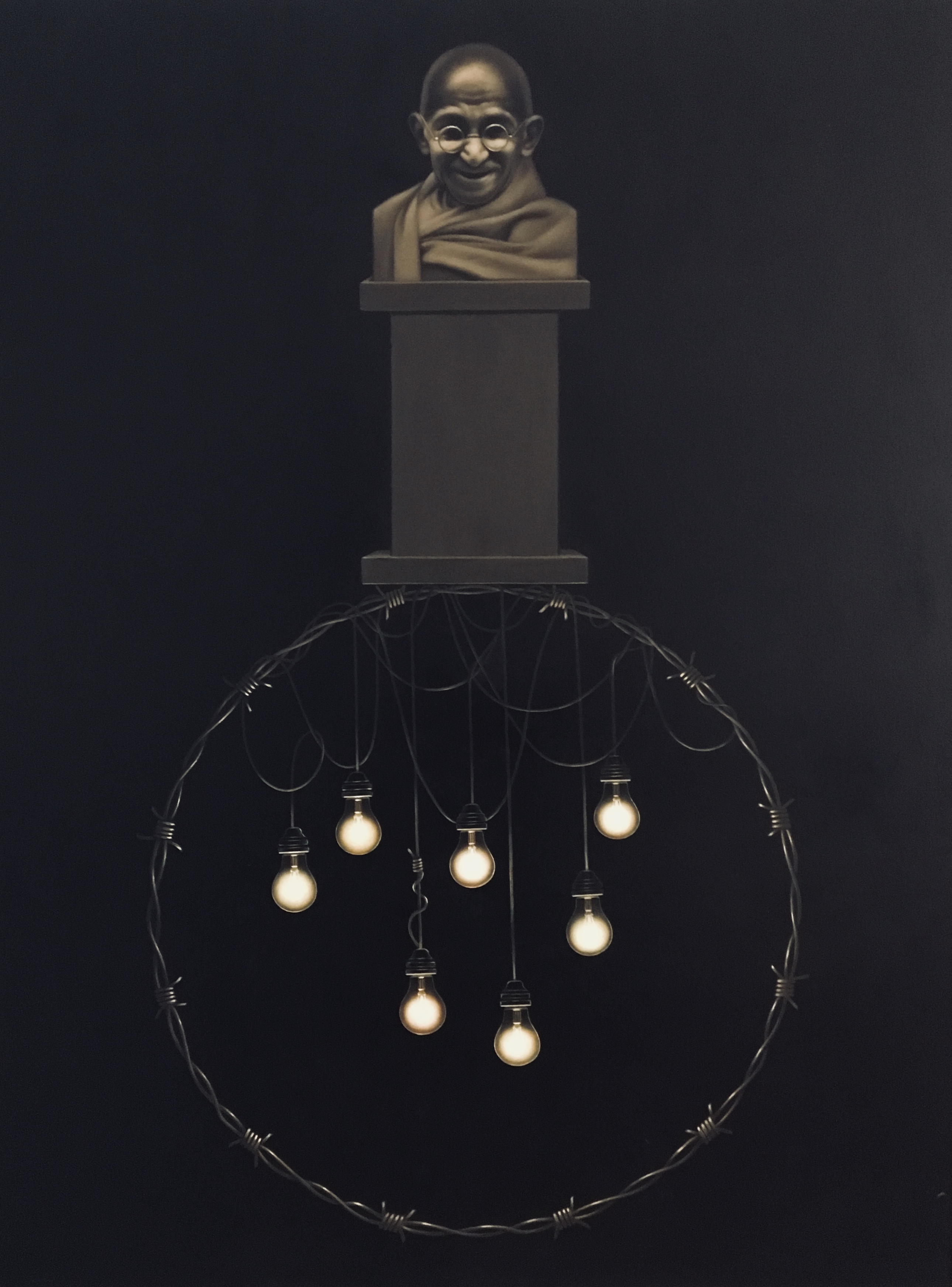
Are we sitting on chairs that we want to sit on? Do chairs need colours like those we have ascribed as whites and blacks? When you read sitting on chairs made of teak or rosewood, do Nilambur or Amazon make their presence felt on your pages? One of the most expensive chairs in the world is the one that was designed by Emperor Shah Jahan, the Peacock Throne. Was it a chair that could be sat upon by the thieves too when they stole it from the Diwan-i-Khas? Was there not a single carpenter who could make that chair, as Brecht asked? The chair is an idea. It poses a multitude of questions.
It is the four legs of the idea that the chair is, that Gandhi the furniture designer cut off, and reduced the size of. He took down the seated person closer to the floor. Gandhi did not allow anyone to look down from a raised dais to speak. The line of human heads was made into a straight line.
The design of domestic devices such as the table and chair undergo rapid transformations in accordance with the relations between the individual, family, and contexts of sociality. It is not in the nature of chairs, dining tables, and shelves made of teak to stay still. They change place often. They shift shape continuously. Some disappear. The reclining armchair of our times is not at all what it was earlier. The arms of the chair do not stay connected to the legs. Where there were four legs, it became eight-legged. It took shape as three-legged sometimes, and later, even with a single leg. Along with the shape-shifting and multi-bodied chairs existed the handicapped thrones of eminent emperors. Sometimes, like in the installations of Colombian artist Doris Salcedo, chairs climbed atop palaces of Justice or the houses of parliament like so many armadillos. Apparatuses and objects go through swift transformations. To quote Paul Cezanne: “One must hurry up if one wishes to see anything”. Those blocks of mountains were once fire.
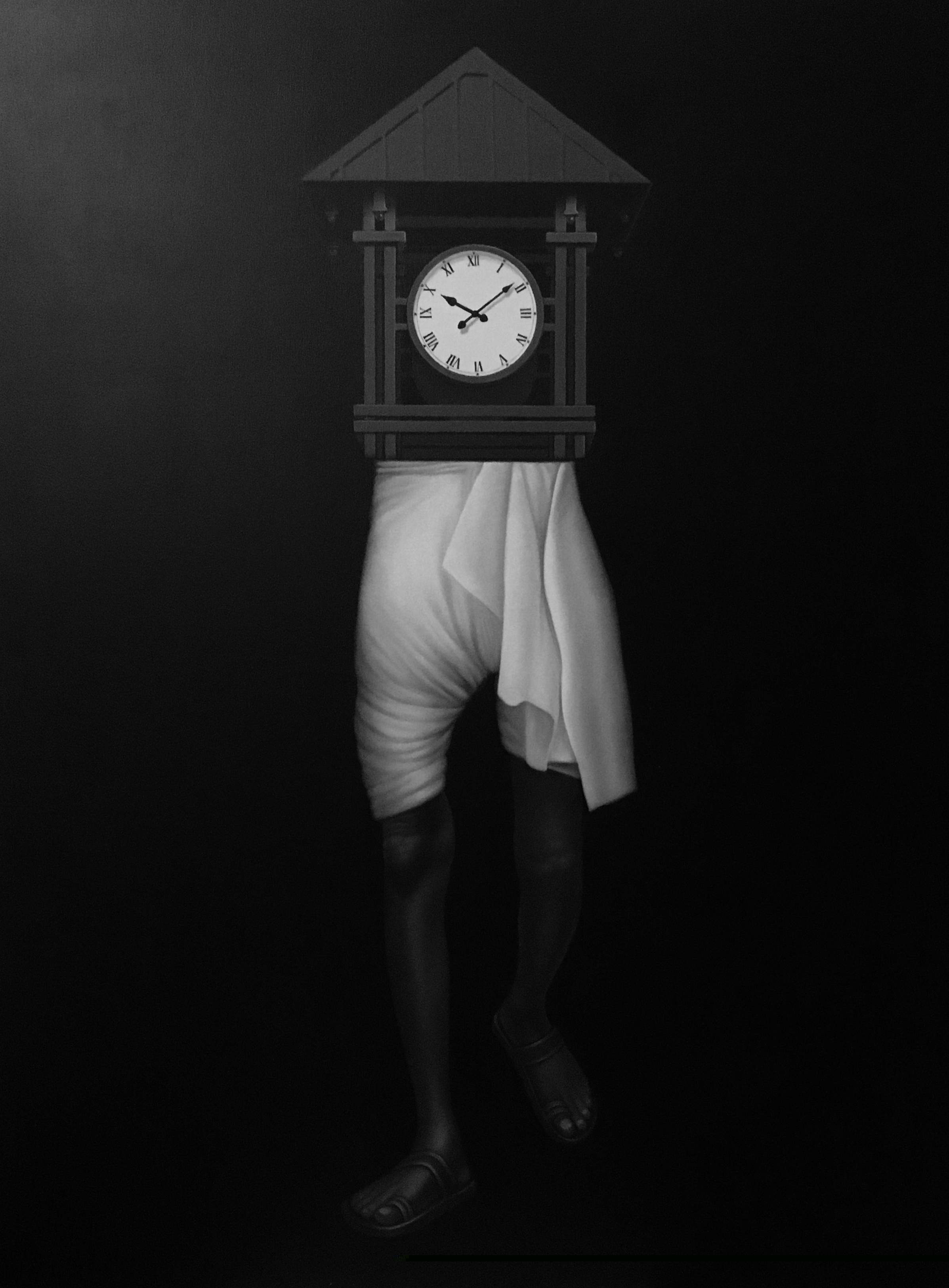
It is the metamorphosis of objects that is behind the story of Najad’s life as well. It is also the story of all the people on earth. Najad is a metal worker in Iraq, who learnt, when very young, the art of casting from molten metal. Najad’s roots are firmly planted in the recent history of the Iraq war. Najad creates rectangular bricks out of the ruins of bombs, mines, bullets, aircrafts and the remains of military tanks. Then, after melting them again, he sends them to China for making new objects out of them. In China, these metal bricks are melted and shift shape again to become demons of destruction.
Najad became a rich man from this metamorphosis of metal bricks, and made the kind of wealth an ordinary metalsmith can only dream of. Through each melting process, he gained newer knowledge. One of the things he learnt was that more than thirty nations supplied bombs, guns, and tanks to Iraq for military use in the war. When he searched back further, he came to the understanding that many of these weapons were made by melting church bells. Contemporary artists are now turning Najad’s metal bricks back into church bells (a bell made from Najad’s bricks was exhibited in the 56th Venice Biennale my works were part of).

It is the strange metamorphosis of objects that makes weapons of war possible. Gandhi’s objects, on the other hand, travel in the very opposite direction. For Gandhi too, objects are weapons. Don’t you hear the peals of bells from Gandhi’s temple?
Contemporary art too is a form of meditation. The artist observes and examines objects closely. The artist, like Cezanne, comes to understand that mountains were once fire. Yasujiro Ozu cut off the tripod of the camera and made it shorter. Like Gandhi, Ozu too, looked at life seated on the floor. Ozu removed from the camera everything that was not essential to viewing. Ozu—who made fifty three films until his death—shed all decoration from his cinematic practice, much like Gandhi who moved towards asceticism in his clothes by removing them one by one. Ozu made redundant the pan shot, trolley shots and each such possibility of movement from the movie camera. The camera, like life itself, became a translucent extension of the body. Through his naked and bare camera, Ozu picturised how Japanese families came together and fell apart in the post-War years. Like Gandhi, Ozu kept growing into the bareness of life.
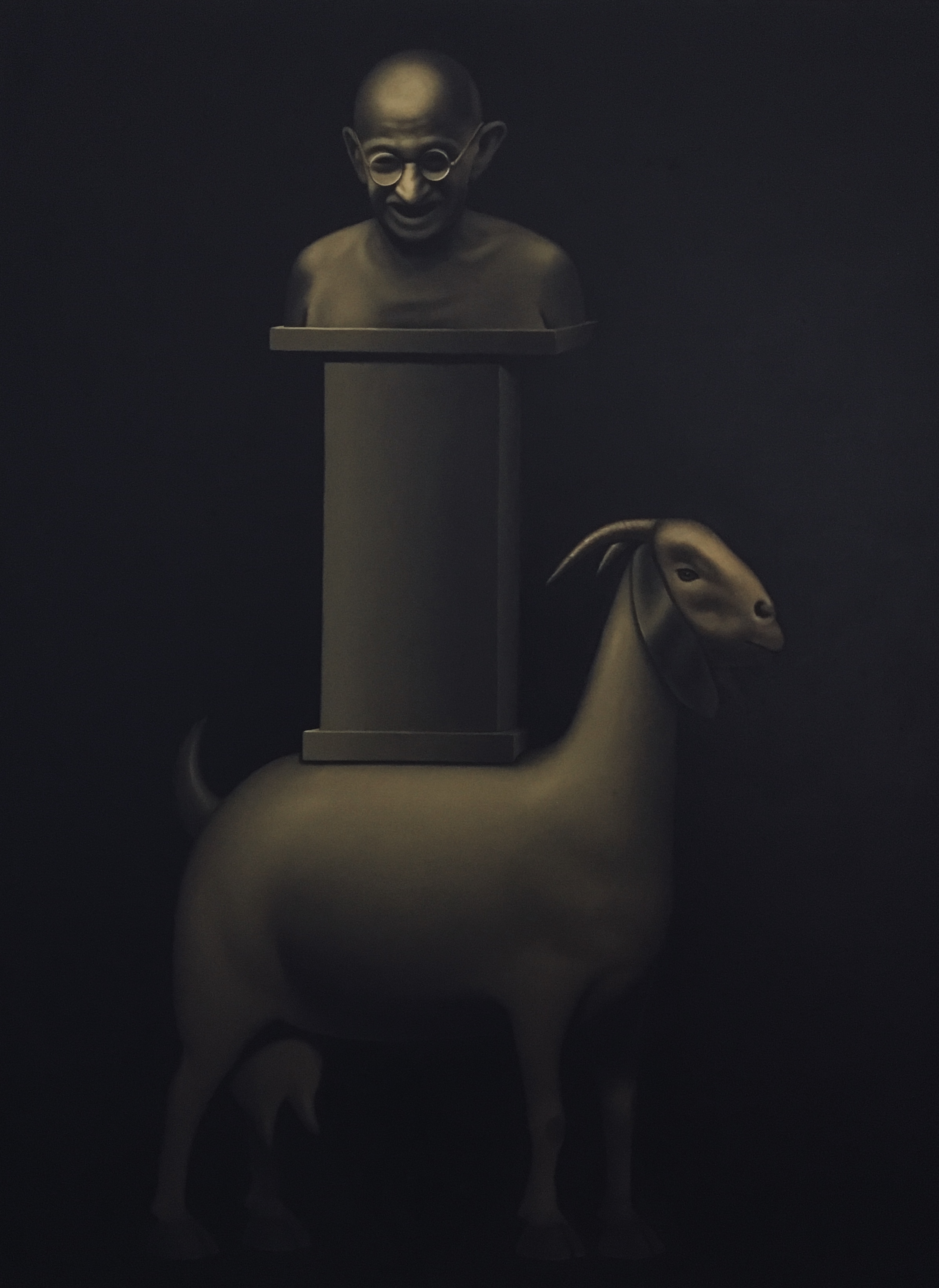
There is a short story by Saadat Hasan Manto. It is a story that keeps growing inside after one is done reading it. Manto, the writer, keeps watching that growth with amusement. Manto, who wrote several stories about the Partition of India and Pakistan, looks at the reader from between the letters in the story. The protagonist of the story is a big box made of wood. The box is a rectangle that reminds one of Luis Bunuel’s film, That Obscure Object of Desire. The one who gets hold of the box realises that he cannot lift it alone and calls a friend to assist him with lifting it. In the box are things that generate desire. Many objects inside one object. Like a well that Bunuel’s character searches for: a profoundly deep well containing many wells. The two characters in Manto’s story, after much bickering, decide to divide up the desirable things inside the box in two. When the box is opened, a man comes out of it carrying a long sword. At once, he cuts the two claimants to the box into four pieces. Manto writes the story in order to gain understanding of the box. He knows that inside the box is the history of hundreds of years of the Indian subcontinent. He knows too, that the man inside the box will come to cut him up as well. Manto also knows that he will have to spend the rest of his days looking at his severed head across the border, like a lizard looking at its broken-off tail. That is indeed what happened in Manto’s life. Until his death, Manto’s body in Lahore kept looking at his head that remained in Bombay.
The only way to conquer an object is to know it profoundly. In Gandhi, it is the way to achieve Swaraj. Gandhi, sharpening his mind and body, gains insight into the object. He writes the answers to the question paper that he has himself prepared for the examination. Gandhi looks at the object the way the Bodhisattva of Ajanta murals looks at the lotus flower. He observes the weapon in his hands: a fistful of salt that spreads like another white ocean. He fasts in order to understand his body. He wears a loin cloth to understand his people. He wears glasses with two round lenses in order to understand the contradictions of the world. Even now, Mahatma Gandhi is learning about objects, is studying the world.
(Translated from Malayalam by Sabitha Satchi.)
